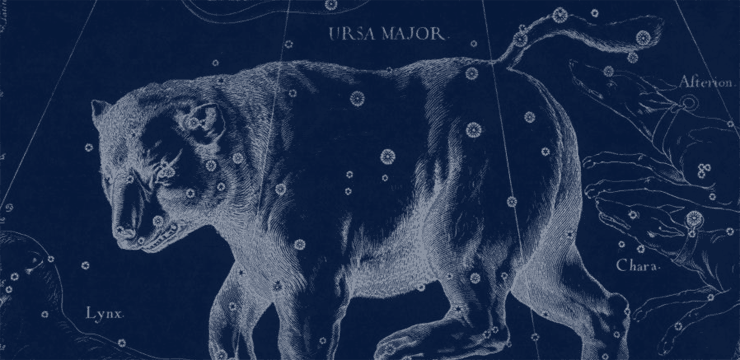January Constellations & Folklore
January 2011 :
Now that we've begun the coldest part of the year, we are fortunate to have over our heads what some feel is the most beautiful set of constellations to enjoy. After all, who isn't able to quickly find the Hunter Orion above us at this time? With its belt of stars and symmetric brilliant Rigel and Betelgeuse, Orion is perfect for introducing a new stargazer to the wonders of the season. The belt, especially, can be used as an arrow. Follow it to the right, or west, and you see a star very close to Betelgeuse in ruddy hue. This one, Aldebaran, is the bull's eye of Taurus. Situated at the upper left of a perfect letter "V," the bull's face bounces off the sky into your eyes. Continue the line to the right, and you discover the little object very often mistaken for the Little Dipper - the seven sisters, the Pleiades. Situated right on Taurus's back, this beautiful open cluster- once you're found it, you just can't lose it - your eyes will drift right to it.
Back to the belt, this time travel to the left, to the brightest star in our nighttime sky, Sirius, the nose of our Big Dog, Canis Major. One thing I love about this constellation is that it actually looks like what it's supposed to be, as opposed to his companion, the Little Dog, Canis Minor, which, directly above Canis Major, resembles more a tail than a complete animal. The only way you'll probably know you've found this pattern is by its bright star, Procyon.
Back to Orion's belt, but this time move straight up through Betelgeuse to the twin stars, Castor and Pollux, the heads of Gemini, the Fraternal Twins. Because they are just two stick-figure shapes, they are easy to pick up, especially as, during their travels across the night, they do get almost overhead in our skies. Then, while you're there, look right, or west, to the large pentagon, Auriga, the Chariot Driver, with its brilliant Capella, a star that, if it were just a few more degrees north, would be circumpolar.
And now that you've reached Capella, draw a mental line from it to Castor, then to Pollux, left and down to Procyon, straight downward to Sirius, right to Rigel, right and upward to Aldebaran, then left to Betelgeuse. You've just made one of the larger asterisms in our sky, the Heavenly G. This shape is so easy to locate that, in our generally brightly lit skies, it may become so obvious that it will overcome the beauty of the constellations it is a part of. But, keep looking. The winter sky is too wonderful to pass up.
When to Observe
Constellations
Related Topics




